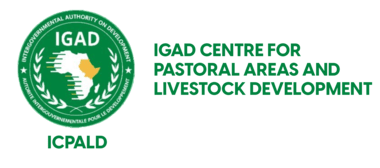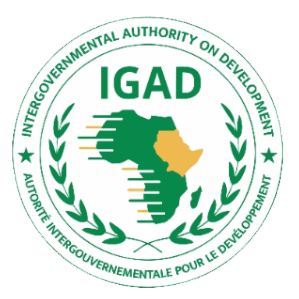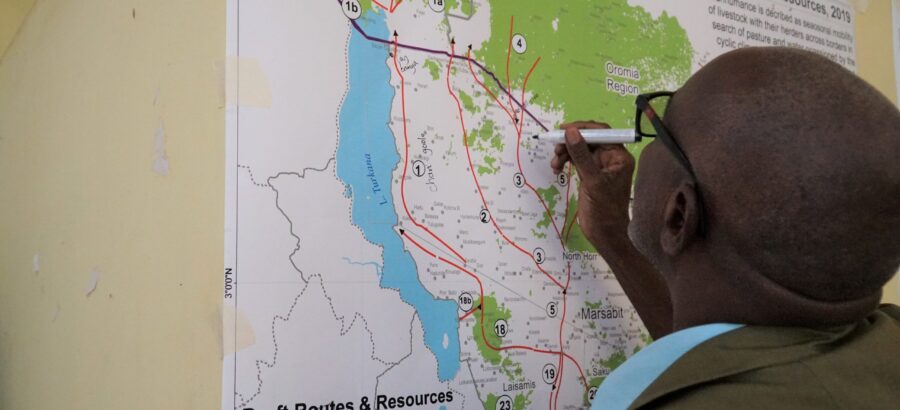Background
The resilience of pastoral and agro-pastoral livelihoods has been eroding due to a number of factors; climate change, livestock diseases, recurrent conflicts, tenuous access to natural resources, among others. The threats to livelihoods transcend borders, and governments are increasingly looking to finding joint strategies and solutions to tackle some of these shared challenges.
Holistic cluster development calls for assessment of the situation at hand as a basis for planning and monitoring. The mapping assessment of the Gambela Akobo cross border nested within the IGAD proposed cross border area 5 was initiated in 2020. It provides insight on the influence climate variability has on shared natural resources. It delved into looking at the seasonality of grazing areas which by extension dictate the cross border seasonal movement, livestock trade marketing system, cross border agreements, and cross border resilience enhancing projects/programs. This assessment was nested within the Letter of Agreement with FAO that fosters cross border governance structures for the implementation of a bilateral MoU for harmonization of disease surveillance/vaccination.
An extensive deskwork research and data (information) exchange with partners and stakeholders in Ethiopia and South Sudan set precedence for draft outputs. Culmination of the entire assessment was done through a virtual validation meeting on 29th March 2021 due to challenges in accessing the areas in the face of the prevalence of Covid-19 pandemic. The organizations and institutions present were the Member States (from department of planning, veterinary services, livestock production and marketing), FAO Ethiopia, FAO South Sudan, VSF Germany, Save the Children, ZOA, Gambela Research Institute, Nile Hope and OPRD.
Welcome and Opening Remarks
Dr. Ameha Sebsibe, Head of Livestock Unit ICPALD, opened the one-day virtual meeting on behalf of Dr. S. J. Muchina Munyua, Director ICPALD. The meeting was also addressed by Mr. Augustino Atillio, Director General, Planning and Extension, Ministry of Livestock and Fisheries, South Sudan and Dr. Kassaw, Veterinary Epidemiologist, Ministry of Livestock, Ethiopia.
Workshop Objectives
- To validate the assessment outputs of key cross border livestock routes/corridors, resources (grazing & water).
- To review existing cross border agreements and resilience enhancing livestock development supporting infrastructure in Gambela-Akobo cross border area.
- To propose conflict mitigation and resource sharing management plans.
Key Plenary Discussion
Seasonal Livestock Mobility
- The main transhumance route during the dry season (December- May) traverses from Akobo-Wanding- Rumyierri-Binyang and pastoralist retreat back using the same route. Other transhumance routes originate from Akobo West payams of (Dirror/Buong/Walgak)-Ulang-Nassir-Burbie-Wanthoa/Mataar Ethiopia. It was noted that they sometimes do dry season peace conference before they move
- Usually, South Sudan herders would leave their families back home as they head towards Ethiopia. However, due to insurgence of insecurity, the status quo has changed and this has brought about the entire household being on the move.
- Vulnerable groups (young, women & elderly) are usually left behind in major towns like Akobo while on transit.
- Proliferation of small arms and light weapons across the border, and their use by the young men coupled with geopolitics are some of the driving forces that hamper cross border mobility.
Rangeland Management Practices
- Vast open landscape rangeland is used by both livestock and wildlife in some instances. There have been efforts geared towards rangeland development through establishment of fodder production sites to complement the open grazing fields as well as area enclosures. However, there is room for more development and support.
- Uncontrolled bush fires in South Sudan raised concern by the government. In response, the parliament is in the process of reviewing bills on rangeland management and fire control.
Livestock Trade and Marketing
- Behavioural change amongst the pastoralists (monetization of livestock) and the growing demand in major towns have supported an active livestock trade and marketing environment. Primarily the trade within this cross border area is informal, stemmed on tax evasion.
- A total of 11 livestock markets; 2 primary markets in Akobo and Thukchapi; 8 open bush markets in Mer, Nuktak Dengjok, Border market, Alali, Akobo bush market, Buong, Walgak and Wechjal.
- Linkages to major markets is mostly through trekking and use of boat for waterways.
- Data on livestock traded in the markets is scanty. FAO South Sudan office in collaboration with the UK Ministry and Foreign, Commonwealth & Development Office (FCDO), have embarked on a livestock census that will involve the use of drones and remote sensing technologies to fill in the crucial gap on credible and reliable livestock figures in the country.
Cross Border Agreements and Good Practices
- Gambela Akobo cross border area has strongly rooted local initiatives and structures championed by communities.
- 3 community agreements exist; Regular monitoring and reporting of cross-border disputes; Curbing of cattle raids/theft and Illegal cross border trade.
Cross Border Projects/Programs
- Majority of the resilience enhancing propjets/programs are short term (3 years) associated with emergency response rather than development oriented.
Proposed Resource Sharing and Conflict Mitigation Plans
- Sustainable bush clearing and reseeding measures.
- Strengthening existing structures for natural resource management that support community protocols therein.
- Planned grazing system that is accommodative for both “host” and “visiting” pastoral communities.
- Capacity building of cross border peace actors/committees on existing structures on conflict mitigation and resolution.
- Establishment, facilitation /support of cross border committees by providing technical and financial support.
- Support the elaboration of by-laws and agreements that governs transhumance/access and utilization of natural resources as means of improving conflict mitigation and peace coexistence between pastoralist and host communities.
Recommendations
- Wholistic integrated cross border development should be in line with corridor development, with stakeholder engagement as the entry point, and an integrated common geographic area extent. The identified priority transhumance routes, resources and trade routes can then serve as conduits in support of ongoing cross border regional initiatives.
- Operationalization of agreements, MOU and protocols through existing community level infrastructure that have proven to be strongly rooted in local initiatives championed by cross border communities of Gambela Akobo cross border area.
- Due to the high levels of seasonal mobility experienced in the cross border areas, grazing areas are often perceived as fluid and temporary, often driven by climatic conditions. There exists strong correlation with conflict data as well. Hence, the need for integrated regular monitoring of rangeland resource. This could be through the use of established monitoring systems both at national and regional level, domesticated at cross border. For example rangeland monitoring and forecasting system (ICPALD) conflict early warning (CEWARN) climate prediction (ICPAC).
- In view of corridor development along identified priority routes, exhaustive ground verification exercise on resources is to be done with involvement of community, as baseline for monitoring of resilience and implementation of cross border interventions.
- Clustering of the traders based on their specialization which can be attained through enrolment in trade unions.
- Value chain development along livestock value chain. This will contribute to job opportunities and diversified trade of goods and services that boost household incomes and livelihoods.
- Establishment of coordination platform specific to Gambela Akobo cross border area with the aim of sustaining cross border development and operationalization of agreements, MOU and protocols.
- Establishment of joint resource mobilization drive geared towards identified resources, infrastructure and gaps therein for corridor development.






